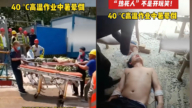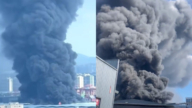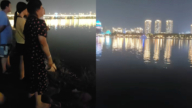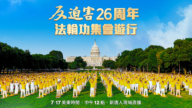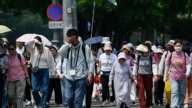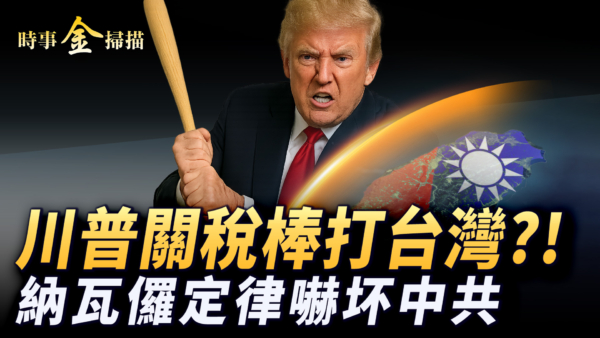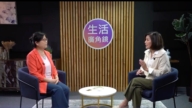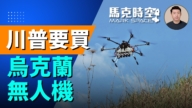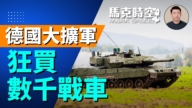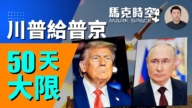【新唐人2014年05月06日讯】大陆当局日前高调纪念“五四”学生运动95周年。与此同时,海外舆论注意到中共在建政前后,对学生运动的态度截然不同。最典型的是1989年镇压和屠杀以学生为主体的“反官倒、反腐败”行动。其实近年来,学生群体无论在维权事件中,还是在退出中共党团队的活动中,他们的参与都遭到了当局的迫害。
大陆“五四青年节”当天,中共国家主席习近平到北京大学考察,并在校园中观看了北大师生纪念“五四运动95周年”的诗朗诵表演。大陆媒体对此广泛报导。
1989年5月4号,抗议学生在“五四运动70周年”再次发起大游行,主题是“庆祝五四,为民请命”。他们认为自己正在参与一场“新五四运动”。
美国《纽约时报》在5月4号发表了文章﹕“从五四到六四:一次历史话语权的较量”。
1989年6月4号凌晨,在天安门广场、长安街等多处,中共派遣全副武装的军人镇压和屠杀了大量要求“反腐败、反官倒”的学生和市民。当时,天安门广场中央的所谓人民英雄纪念碑上和台阶上都留下弹痕。而纪念碑的底座上有一幅浮雕,表现的正是1919年的“五四”学生运动。
中共在建政前,对学生运动加以利用、歌颂,而在掌权后却给以镇压和屠杀,这种不同的态度和做法引起了学者们的关注。
原山东大学教授孙文广:“共产党是实用主义的态度,五四学生运动要反对北洋军阀,共产党就可以为自己增加一些合法性的依据,但是天安门的学生运动发生在共产党掌权的时候,虽然他们的口号和五四运动也有很多类似,但是它就要派坦克车来镇压。”
1989年“六四”后,历史学者、原首都师范大学教育科学学院副教授李元华的一位同事告诉他:原本北京师范大学的新生入学时,学校都要介绍校史,也就是介绍以前学生运动中“北师大”学长们的行动。但是在“六四”后,中共的大学领导突然不知道如何讲述这段历史了。
李元华:“它也知道已经有悖论。中共把它之前正常的政府都描写为一个黑暗的政府,所以任何跟政府敌对的势力,它都会极力奉扬。反政府等于是给它篡得政权有一个合法性的说明。而在它现政下,任何的所谓追求民主,追求普世价值的活动,它都是残酷镇压的。”
美国加州大学欧文分校历史学教授华志坚,长期研究中国学生抗议运动。
他观察到:“现在很难想像1989年的那一幕会再次上演,其中一个原因就是过去25年里,政府(中共)耗费了大量精力,竭力要把那场运动重演的机会减到最小。”但是他强调“五四的传统并没有在中国彻底消亡”。
2012年7月初,四川甚邡上百名中学生因为担心钼铜项目污染环境,到市政府门前抗议,结果遭到当地警方镇压,引起更多市民参与和支持。这些中学生喊出“我们可以牺牲,我们是90后”,让全世界对中国新一代学生赞誉有加。
李元华:“年轻人接受新鲜事物的能力比较强一点,更勇于尝试一些新的东西,对未来社会有一种憧憬,顾虑比较少,有一股热血,这个也是他(们)能在运动当中走到最前列,成为主要的推动力的一个原因。”
在2005年后出现的退出中共党团队的活动中,包括学生在内的一亿多中国人选择了退出中共的一切组织。中共对于传播《九评共产党》的正义人士,严加抓捕,施以重刑。
李元华:“觉醒不是光学生,应该是整个民族的觉醒,包括每一个中国人的觉醒。年轻人因为他可以突破网络,所以对社会的问题反应也比较快一点。随着信息传播的发达,更多的中国人可以突破中共的封锁,更多的中国人是会觉醒的。”
积极参与各种民主运动的大陆青年欧彪峰,5月3号在“推特”上问:“五四运动”时期的那种理想与激情,在当今青年身上还能看到吗?
“六四”学生领袖之一的周锋锁回答他:“不用找,你就不错。”
采访编辑/唐音 后制/萧宇
Student Movement: 1919 vs. 1989
While the Chinese Communist Party claimed to commemorate
the 95th Anniversary of May Fourth Movement of 1919,
foreign media noticed the opposite attitudes of the regime
towards student movements before and after coming to power.
Most noteworthy was the suppression and killing of the 1989
student protest against the profiteering and corruption of the regime.
In fact, students continue to be subject to persecution by the
CCP regime during rights defending activities and/or the
denouncement of the CCP and its associated organizations.
Chinese President Xi Jinping was reportedly to visit Peking
University during the Youth Day in commemoration of the 95th
Anniversary of the May Fourth Movement.
On May 4, 1989, another student protest was initiated on the
70th Anniversary of the May Fourth Movement.
In the name of ‘celebrating the May 4, and pleading for the
people’, students claimed it a ‘New May 4 Movement’.On May 1, NY Times published, “Q & A: Jeffrey Wasserstrom on History, Dissent and the Power of May 4 in China."
In the morning of June 4, 1989, heavily armed soldiers
conducted the mass killing in Tiananmen Square, leaving bullet
holes in Tiananmen Square, including the CCP’s Monument to the
People’s Heroes, which has a frieze showing 1919’s students protest.
Scholars criticize how the CCP had taken advantage and praised
the students’ movement prior to their governing and then
suppressed and murdered the students after coming to power.
Sun Wenguang, former Shandong University professor:
“The CCP is of pragmatism. They utilized the 1919 student
movement to oppose the Northern warlords for establishing its
legitimacy basis. But the 1989 student movement took place after the CCP came
to power. Even though sharing similar slogans, the students were faced
with the tanks. “
Historian Li Yuanhua described what his colleague at Beijing
Normal University had said to him after the 1989 students’ protest:
The University would routinely introduce University history to
the freshmen, in particular, the participation in the 1919 student
movement. After the 1989 massacre, this University history has become a
tough subject for the CCP leaders at the University.
Li Yuanhua: “There is contradiction. The CCP had described a
legitimate government as a dark force, and vice versa.
Opposing the government was to its advantage to usurp the
political power. Under its ruling, any pursuit of democracy or universal values
will only meet its brutal suppression. “
Jeffrey Wasserstrom, a history professor at the University of
California, Irvine, who has studied student protests in China,
said, “It’s hard right now to imagine something like 1989
happening again for various reasons, one of which is simply that
the government has spent a lot of energy over the last 25 years
working to minimize the chances of a replay." He also stated, “I wouldn’t write the May Fourth tradition off completely."
Take the high school students at Shifang, Sichuan as an example.
In early July 2012, hundreds of students protested against the
polluting molybdenum-copper project. Local police repression only led to more participants. The students’ slogan, “We can sacrifice, we are the 1990’s
generations," has won world approval.
Li Yuanhua: “The younger generations have higher capacity to
absorb new things. Their daring courage and vision of the future
have much less concerns. Their passion allows them to become the leaders and the
driving force."
Among more than 100 million Chinese people who quit the CCP,
there are numerous students as well. The CCP has conducted strict arrest and imposed heavy penalties on those who participated in the righteous activities to quit the CCP.
Li Yuanhua: “It is not just the students, but the entire nation
should awaken. The younger generations are able to pass the firewall and obtain
outside information through the Internet, and thus react to the
social trend much quicker. Following the spread of information, more Chinese will break through the CCP’s blockade and awaken."
Ou Fengbiao is a younger generation actively participating in
various democratic movements in China. On May 3 he asked on Twitter: Is the kind of ideals and passion of the May Fourth still seen in the youth nowadays?
One of the 1989 student movement leaders Zhou Fengsuo
responded: “Do not look around. They are still around."
Interview & Edit/TangYin Post-Production/XiaoYu





